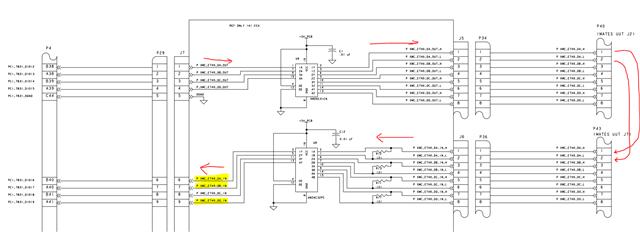Other Parts Discussed in Thread: AM26C31, AM26C32C, THVD1420, THVD1520
Tool/software:
Can you provide me the normal response to the follow circuit if certain conditions occur.
1. Jump the pins described in the table.
2. Run the test. The test should fail.
3. Keeping the first set of pins shorted, jump the second set of pins described in the table.
4. Input a pulse train on J7 1-4 identified in the table below.
5. Stop Pulse Train Open the pins described in the table, while keeping the other set shorted.
6. Input a pulse train on J7 1-4 identified in the table below. The test should fail.
7. Stop Pulse Train Open the pins described in the table. Both sets of pins should now be open.
8. Input a pulse train on J7 1-4 identified in the table below. The test should fail.
The pulse Train is 0XAAAA5555


The intent here is to verify the signal paths…in and out. So, one of our team members thought that we would be able to use the method I sent to verify the path operates correctly. If there is a better methodology, please advise.


